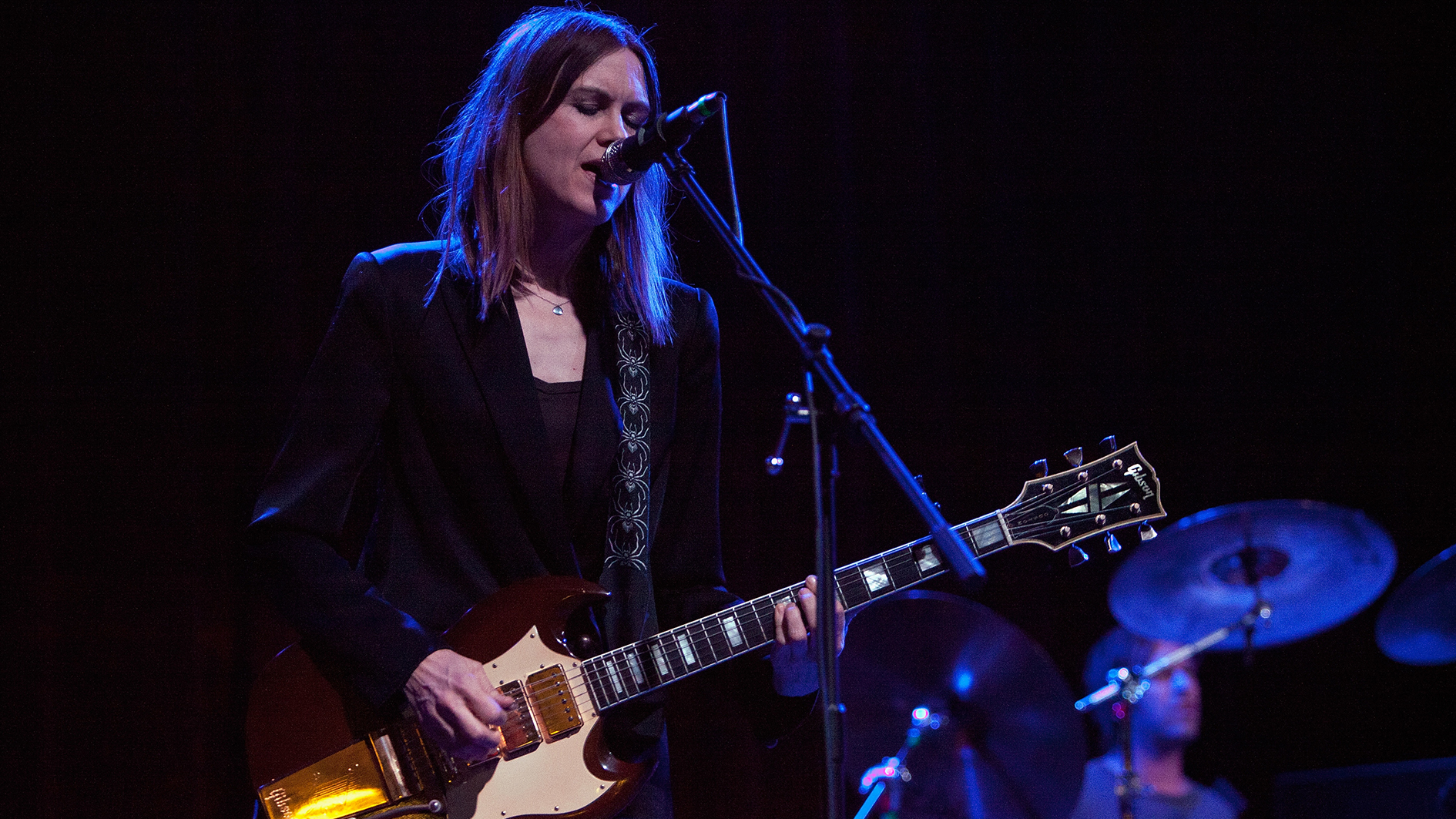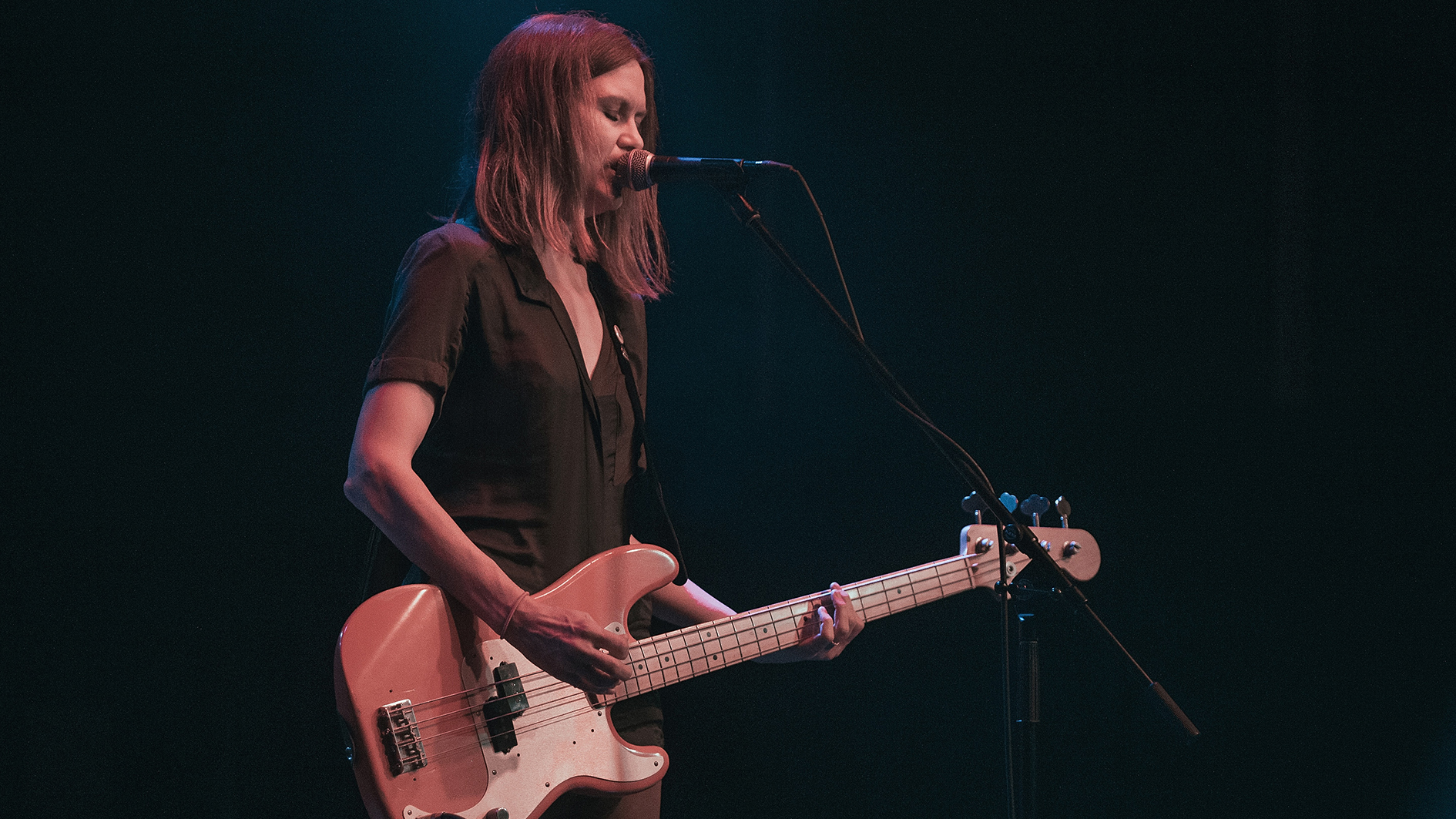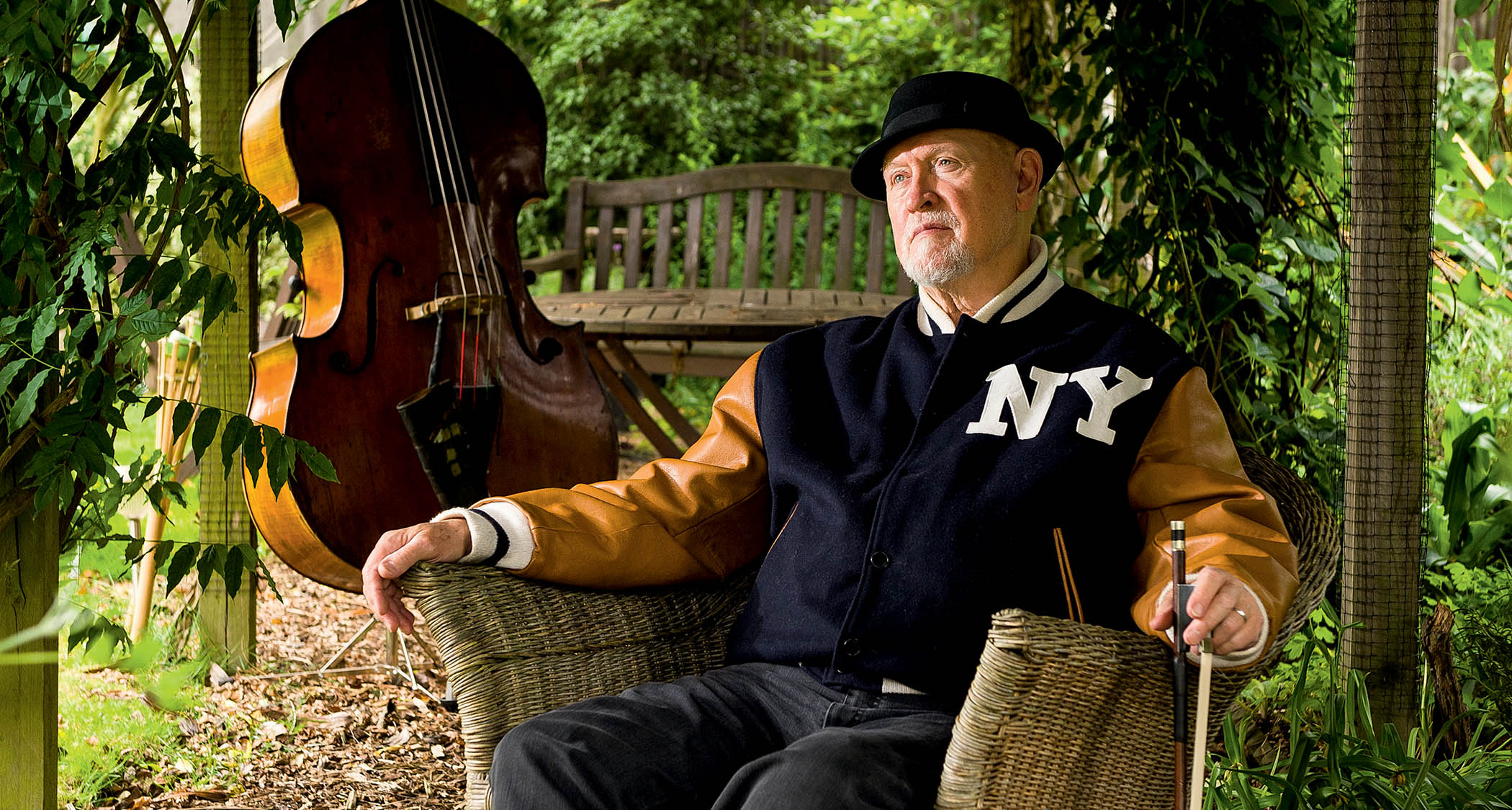Juliana Hatfield: “There’s some biting stuff on this album – the Fender Mini Twin is cute, but it makes really great fuzz sounds”
The veteran singer-songwriter details the unconventional recording techniques behind her 19th solo album, Blood

Since delivering her debut solo album Hey Babe back in 1992 – or, perhaps, since co-founding cult Massachusetts college rock unit the Blake Babies in the mid-'80s – Juliana Hatfield has built up one of the most impressively hooky, fuzz-forward catalogues in all of indie rock.
At least from a technical standpoint, that consistency was challenged when the musician began working on her 19th solo full-length, Blood.
Following the untimely demise of a once-trusty digital 8-track, Hatfield spent the early months of the pandemic begrudgingly learning how to use GarageBand, on which she tracked much of Blood’s guitars and synth work (overdubs eventually took place at Q Division Studios in Somerville, MA).
Like Hatfield’s work on recent efforts like 2019’s Weird or that same year’s Andy Summers-celebrating Juliana Hatfield Sings the Police, Blood tracks like Mouthful of Blood run wild with jangle-heavy guitar hooks and synthetic mellotron.
From the jump, though, Blood’s introductory The Shame of Love takes a wild pivot from the template via “cruddy”, ultra-compressed guitar textures recorded through laptop mics, and collaborator Jed Davis’s almost EDM-like production touches that tear Hatfield’s chords into ribbons of digital noise. That said, Hatfield’s innate sense of melody remains unabated.
Speaking with Guitar World, Hatfield got into the guts of Blood, the surprisingly big bite of a Fender Mini Twin, and how a recent run of livestream performances are bringing some bloody awesome deep cuts back in the spotlight.
In terms of tones and textures, there’s quite a lot to unpack with the record’s opening, The Shame of Love – the fuzz, some electronic production touches. Even with the clink to that intro, it sounds like an unplugged electric, or a hard-gated acoustic. What’s going with those first few moments of sound?
All the latest guitar news, interviews, lessons, reviews, deals and more, direct to your inbox!
“Well, for some of the songs I was working with a guy from Connecticut named Jed Davis. He was helping me troubleshoot GarageBand, which I’d never used before. I’d be texting him, and he’d walk me through it so I could figure it out. Then, I started sending him little snippets of music, just for him to mess around with.
“A lot of the songs started with me sending Jed chord progressions. They were not recorded for mass consumption, but he took these really cruddy-sounding things I gave him, treated them, and made them sound cool.
“The Shame of Love is me playing an acoustic guitar into the Photo Booth app, just playing into the camera that’s built into my laptop. It's 20 seconds of music and video I taped so I could remember the phrasings, and that there’s a capo on the second fret.
“He left it alone at the beginning, sounding crappy like it was, and then later in the outro I ended up repeating those intro chords with an electric guitar.”
The Shame of Love is me playing an acoustic guitar into the Photo Booth app, just playing into the camera that’s built into my laptop
What was it like troubleshooting GarageBand while writing Blood?
“It was hell. I’m so miserable with tech. I used to record into a digital 8-track machine that I had sitting on a table – it had eight faders, super-simple; I’d burn my mixes using its built-in CD burner.
“That machine broke, so when lockdown happened I decided I had to bite the bullet and figure out how to work on GarageBand. What overwhelms me is that I like to be able to grab onto things and make them move, so I can see with my hand that I’m [working] a machine. It’s different when you have your finger on a cursor or a trackpad.
“What really kills me [about GarageBand], is the fact that there’s infinite possibilities. It’s like a labyrinth, right? You get in there and you can go in millions of directions. That hurts my brain; I don’t like it. It seems to make everything complicated.
“I know people think that it makes everything simpler, but for me... even looking at the screen, it’s hard for me to take it all in. It’s too much visual information, there’s just too much to learn. I mean, I’ve basically figured it out, but I’m probably using one percent of its capacity.”

In terms of the tangibles, then, and working outside of the box, what were you using in terms of guitars and amps?
“Like I said, some of it started with me sending these crappy recordings to Jed. Some of that was on acoustic guitar, just playing into the built-in mic – I think on the song Torture I probably set up a mic to get a decent acoustic guitar sound.
“Some of it me was videos of me playing an electric guitar. I was mostly using my first First Act electric, a Delia LS.
“[For tone,] I really pared it down, mostly using one sound from GarageBand, because I didn’t really like the others. I’m not comfortable making noise in my apartment, because of my neighbors, so I started off using this GarageBand sound, but later on I went into the studio and started using amplifiers.
“There’s this one sound, it’s called ‘World’s Smallest Amp’ on my version of GarageBand. It’s kind of a cruddy sound, which I like. Not too clean, and not distorted in an icy way.
“There’s a lot of that on the album, but there’s some choice, biting stuff on there, and for that I was using a tiny Fender Mini Twin. Smaller than a bread box, just a few inches across. It’s cute, but it makes really great fuzz sounds. I think I plugged that into my [Z.Vex] Fuzz Factory for a couple things, too. You can hear it in certain spots, like the bridge of Shame of Love.”
For tone, I really pared it down, mostly using one sound from GarageBand, because I didn’t really like the others
On Had a Dream, it sounds like there’s a rotary effect of some sort going on there...
“That was an acoustic guitar track that Jed fucked with. I wrote the part to be plucked with fingers, because I wanted it to have that resonant bite. I tried playing it on electric guitar, but it didn’t sound right.
“There’s also an overdubbed guitar coming in on the intro, and that was done in an actual studio, an old Silvertone guitar going into the Neve preamp.”
Blood follows your Police tribute album [2019’s Juliana Hatfield Sings the Police]. Did coming out of the mindset of that covers project affect this material at all?
“Maybe I shouldn’t say it, but when Had a Dream came out of me, I had [also] started working on a volume 2. I was building tracks for 10 more Police songs, [though it’s] a project that I’ve since abandoned.
“I’m not sure I’ll do it anymore, but I had started recording Man in a Suitcase, and that inspired me to write Had a Dream. Just the way that the chorus rolls around [starts singing] ‘Must I be the man in a suitcase/Is it me, the man with the stranger's face,’ that inspired the guh-guh-guh, guh-guh-guh [rhythmic pattern] in Had a Dream.
“I was coming off of Man in the Suitcase, and my brain twisted it into something else. That was really the only influence that Police album had on these songs.”
On the new record’s Chunks, it almost sounds like you’ve made a beat out of the sound of feedback, or a patch chord coming out of a jack. It’s got that kind of crackle to it.
“That’s what it is: a split-second of noise between chords. This was a couple of years ago, but I was making an album at Q Division, sitting in the control room with a guitar plugged in, with a chorus effect on it.
“I was playing a little chord progression that I liked, and recorded it. When I started writing songs for the new album, I was going back and looking at all these little pieces of music I had recorded and found this one.
“What was great about it wasn’t the chord progression, but a split-second of chug noise when I stopped playing the chords. I sent it to Jed and said, ‘can you somehow capture that noise, that chunk between the chords?’ And he took that and built a loop for Chunks.”
Before I started doing these livestreams I hardly ever went back and listened to any of my old recordings; as soon as I finish making an album I pretty much put it away
Some of the nastiest fuzz on the record is on the lead to Chunks, too. Was that through the Mini Twin?
“That may have been the Miniature Twin, but it’s possible that I did it at Q Division.”
Over the past few months you’ve been doing these solo livestream shows covering specific moments from across your catalogue. Has performing older albums in full – maybe some songs for the first time in years – given you any added insight on your career? Do you see the through line from then to now?
“Before I started doing these livestreams I hardly ever went back and listened to any of my old recordings; as soon as I finish making an album I pretty much put it away. As I’ve been going back and listening to the old songs, though, I was happy to realize I’ve written a lot of great songs over the years.
“I mean, great is subjective, but I did some good work. I don’t know if I really realized that until recently, that I don’t have to be embarrassed by everything I’ve done.
“It’s a solid body of work. I’ve [got] a knack for putting songs together – it’s something I’ve had a handle on from the beginning, I guess. Lyrically, though, some of the old ones are hard to listen to!”
- Blood is available now via American Laundromat Records.
Gregory Adams is a Vancouver-based arts reporter. From metal legends to emerging pop icons to the best of the basement circuit, he’s interviewed musicians across countless genres for nearly two decades, most recently with Guitar World, Bass Player, Revolver, and more – as well as through his independent newsletter, Gut Feeling. This all still blows his mind. He’s a guitar player, generally bouncing hardcore riffs off his ’52 Tele reissue and a dinged-up SG.



